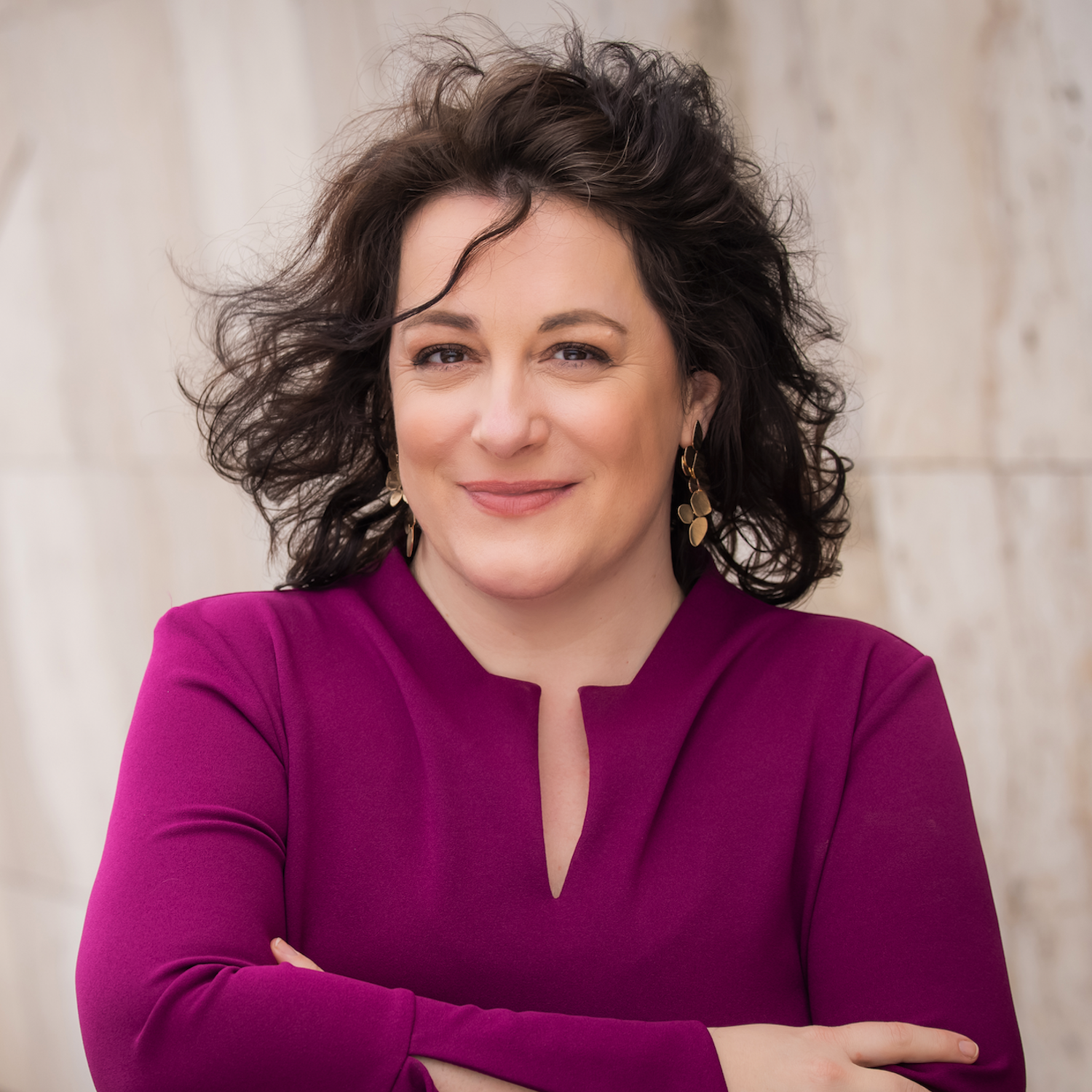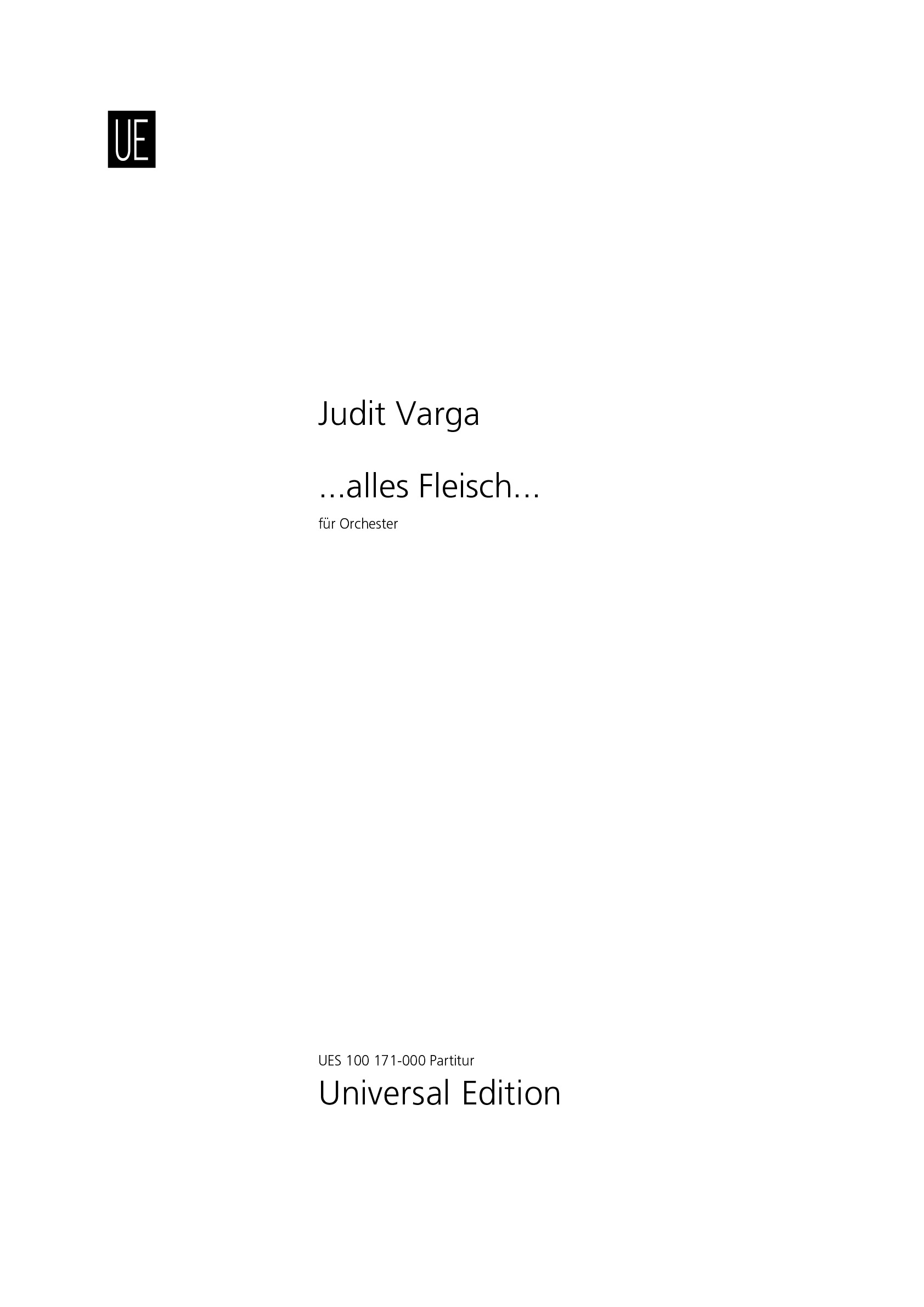

Judit Varga
...alles Fleisch...
Short instrumentation: 3 2 3 2 - 4 3 3 0, timp, perc(3), hp, cel, pno, str
Duration: 17'
Instrumentation details:
1st flute
2nd flute
3rd flute (+picc)
1st oboe
2nd oboe
1st clarinet in Bb
2nd clarinet in Bb
3rd clarinet in Bb (+bass cl(Bb))
1st bassoon
2nd bassoon
1st horn in F
2nd horn in F
3rd horn in F
4th horn in F
1st trumpet in Bb
2nd trumpet in Bb
3rd trumpet in Bb
1st trombone
2nd trombone
3rd trombone
timpani
percussion (3 players)
celesta
harp
piano
violin I (14 players)
violin II (12 players)
viola (10 players)
violoncello (10 players)
double bass (6 players)
...alles Fleisch...
Sample pages
Video
Work introduction
"My piece …alles Fleisch… was composed in 2012 on the request of the Philharmonic Orchestra of Budapest. Its first performance was on 10 October 2012 at the Italian Cultural Institute in Budapest, by MÀV Symphony Orchestra conducted by László Tihanyi. The piece is a requiem, and commemorates the flute artist Zoltán Gyöngyössy who tragically died in a car accident.
The piece is practically a huge spiral representing the periodicity of life, its continuous repetition, and within itself symbolises its own self return. We hear the same musical material and dramaturgy process over and over again, but never in the same way. Time is getting shorter during repetitions, the substance thickens. While the first period lasts 5 minutes, its second appearance is only three minutes, and the third repeat is again shortened and takes only a minute and a half. Finally, the music process is compressed so much that is merely the essence, so by just a few beats It is possible to play a chordal construction from the soft scratch that comes back to the same nothing at the end of the arc.
In this structure there is as much a schenkeri[an] way of thinking as in the humans there is the relative time perception. While teenage years appear to be eventful and infinitely long, an ageing man in vain “fulfils” the same in one year, yet he feels the time is running. But in this monumental variation series not only the thickening can be observed, but also the enrichment: a new, complex music layer appears as a contrast to the basic idea, but in the meantime it again and again falls to nothing by the end of the period. The more advanced the piece is, the more extensive and more complex musical layer is built up in a given section, the stronger the breakdown is – in both dramaturgy and sound moods. The round and soft tune of the tutti orchestral sound is increasingly broken by noise, rattles: col legnos, scratched sul ponticellos, dissected piano repetitions, tremolos, and totally devastating tonality and intonation stringed glissando-s.
Passing away is an integral part of life as indicated by the title and motto of the piece: “alles Fleisch ist wie Gras und alle Herrlichkeit Der Menschen wie des Grases Blume. Das Gras ist verdorrt und die Blume abgefallen” (Brahms’ Requiem item 2, Letter of Apostle Peter 1:24). The music process is self-directed and practically writes itself: it is unstoppably and organically rushing toward its end, where the basic idea, the first 5 minute period shrinks to the smallest yet noticeable music unit, and then disappears in nowhere. This ending is predestined by the first sound of the piece, just as birth predestines the death.
Now, however, this will not be the conclusion of the piece, but after a quotation borrowed from the aforementioned Brahms’ Requiem, I’ll cut the spiral with a sharp impulse. This moment can be considered an analogy to a car accident, since the event is going to be very clear with movie-like sounds. But we can consider this a necessity, because such a heaped up and massively progressing mass can only be stopped by another mighty force.
The epilogue symbolises the shortage: the chamber ensemble is as quiet as much as playing. Here the music is happening practically amongst the sounds, in pauses. Instrumentation is also programmed: the flutes are naturally missing, on the other hand the metallic strings and the airy high clarinets play an absolute typical flute choral texture.The scale of the solo harp steadily moves upwards, but sometimes it turns back to itself, so it seems practically timeless, endless.
The solution (and ultimately almost absolution) is given by the Bach chorale quotation, which seems a new substance and alien only at the first glance it. But as we listen to the heavy Baroque quarters, the retrospective experience becomes clearer, this Bach quotation was present from the very beginning of the piece, and was heard already in countless transformations, since these chords have marked the formal boundaries, and always stitched the music itself. As an atheist this is the way I imagine the power that accompanies the life of a believer."
— Judit Varga

